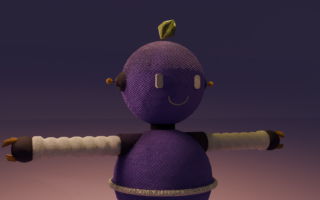3D design has grown rapidly in recent years, not only as a tool for creating static objects, but also as part of the digital revolution that is transforming various industries. The latest innovations in 3D design combine technologies such as augmented reality (AR), virtual reality (VR), and 3D printing to not only enrich the design process but also change the way we interact with the changing physical and digital world. In this article, we explore how these three technologies are changing the 3D design landscape and providing more immersive and interactive experiences.
What is 3D Design and Why is it Important?
3D design is the process of creating three-dimensional digital objects using design software. These objects can include anything from architectural models, to animated characters, to consumer products. In an increasingly digital world, 3D design plays an important role in fields such as film, video games, architecture and manufacturing. 3D design technology
allows the creation of high-precision objects that can be viewed and manipulated from any angle, offering many advantages over two-dimensional (2D) designs. One of the latest innovations in 3D design is the use of AR, VR and 3D printing which are becoming increasingly popular across various industries.
Augmented Reality (AR) and Its Role in 3D Design
What is AR (Augmented Reality)?
Augmented reality (AR) is a technology that allows digital elements to be added to the real world via devices such as smartphones, tablets and smart glasses. AR allows you to place 3D digital objects in a real-world context, providing an interactive and realistic visual experience.
AR in 3D Design
In the context of 3D design, AR allows designers and users to directly view three-dimensional objects created in the real world. For example, architects can project models of buildings they design into real-world spaces to see how the building would look in the context of the existing environment. AR is also very useful for product marketing, as it allows customers to actually “try” a product before purchasing.
AR makes the design process more collaborative and visual. Designers can make changes quickly and see the results in the real world, significantly reducing the potential for design errors during production.
Virtual Reality (VR) and Its Impact on 3D Design
What is VR (Virtual Reality)?
Virtual Reality (VR) is a technology that creates fully immersive experiences, allowing users to enter a digital world that is completely separate from the real world. Users wear devices such as VR headsets to experience and interact with this digital world as if it were the real world.
VR in 3D Design
In 3D design, VR provides a more immersive experience, allowing designers to “walk around” inside models and interact with objects in a complete three-dimensional space. VR allows designers to better understand scale, proportion and interactions between elements in a design. In the automotive industry, for example, VR allows engineers to explore and test vehicle designs virtually, giving them a clearer picture of design features and user comfort before creating a physical prototype.
VR also plays a big role in education and training, allowing students and workers to use VR simulations to understand how 3D design works in real-world situations without risk or expense.
3D Printing: Bringing Design into the Real World
What Is 3D Printing?
3D printing is a manufacturing technology that allows you to create physical objects from three-dimensional digital models. By adding layers of material sequentially, 3D printers can create complex and detailed objects from a variety of materials, including plastic, metal, ceramics, and even biological materials.
3D Printing in Design
3D printing has become an invaluable tool for designers, both in quickly prototyping and creating final products. In the world of design, 3D printing allows you to create highly accurate and customizable models. For example, in the fashion industry, designers can use 3D printing to create truly unique accessories and clothing. In contrast, 3D printing in the medical industry allows the production of prosthetics and implants tailored to the patient’s anatomy. 3D Printing
it also allows the production of products with very complex structures that are difficult or impossible to achieve using traditional manufacturing methods. This opens up new opportunities for product innovation that is more efficient and environmentally friendly.
A Blend of AR, VR and 3D Printing in Modern Design
Synergy of AR, VR and 3D Printing Technology
These three AR, VR, and 3D printing technologies not only work independently, but can also be combined to create a more interactive, efficient, and innovative design experience. For example, designers can use VR to visualize 3D objects to better understand space and proportions, and use AR to view those objects in a real-world context. The model can then be physically printed using 3D printing technology for testing or production purposes.
The combination of AR, VR and 3D printing shortens design cycles by allowing changes to be implemented directly in the virtual world before the physical product is created. This reduces costs and revision time and accelerates product innovation and implementation.
Real World Applications: From Design to Production
In the world of manufacturing, this combination of technologies is very useful. For example, in the automotive industry, engineers can use VR to simulate driving experiences based on created car designs, better visualize vehicle features and improve designs. You can then 3D print the model and test the component’s performance in the real world. Similar applications apply to architectural design, consumer products, and medical design.
Future Challenges and Opportunities
AR, VR, and 3D printing offer many possibilities for 3D design, but there are several challenges to overcome. First, hardware and software costs are still very high, limiting access to this technology for some small-scale industries. Although 3D printing is growing rapidly, there are challenges in terms of production speed and quality of materials used.
However, as the field develops, this technology may become more affordable and efficient, creating more opportunities for designers and industry to use it.
Conclusion
Recent innovations in 3D design (AR, VR, 3D printing) have a major impact on the way we design, visualize and produce objects. This technology enables a deeper, faster and more accurate design experience, opening the door to new possibilities in various industrial sectors. From prototyping to mass production, these technologies are not only changing the way we work, but also driving innovation that will lead to a smarter, more efficient design future.
FAQ
1. What is the difference between AR and VR in 3D design?
AR adds digital elements to the real world, while VR creates a completely digital world. AR enables interaction with 3D objects in a real-world context, while VR enables fully immersive experiences.
2. How is AR used in 3D design?
AR allows designers to view and manipulate 3D objects directly in the real world, providing a more accurate depiction of how those objects would look in a physical context.
3. What are the benefits of using VR in 3D design?
VR provides an immersive experience that allows designers to explore and interact with 3D objects in a virtual space, increasing their understanding of the scale and proportion of a design.
4. How is 3D printing used in design?
3D printing enables the creation of physical objects from digital 3D models, enabling rapid prototyping and production of items with complex designs that are difficult to achieve with traditional methods.
5. What are the biggest challenges in combining AR, VR and 3D printing in design?
Key challenges include high hardware and software costs, as well as issues related to production speed and quality in 3D printing.


